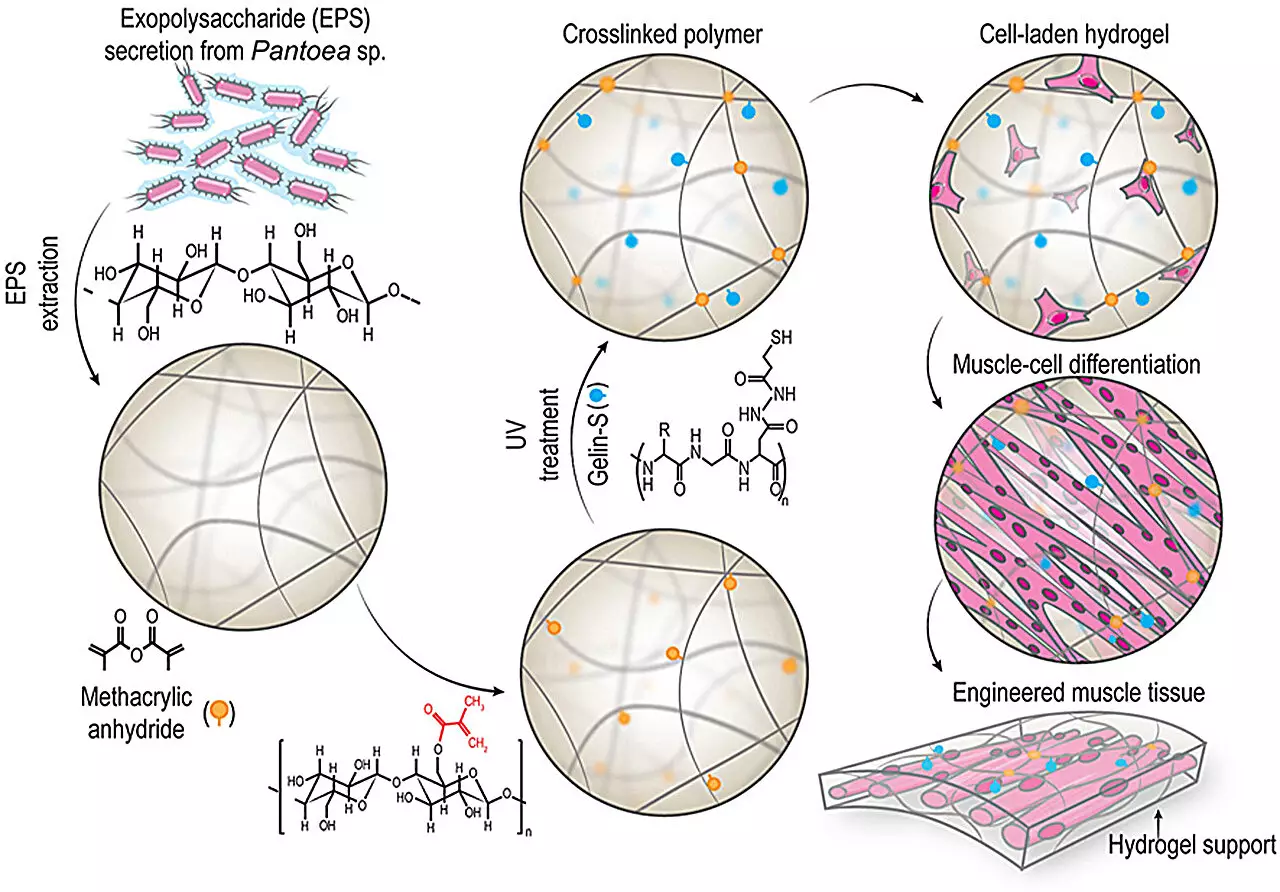A pioneering investigation conducted by researchers at the Technical University of Denmark, spearheaded by Alireza Dolatshahi-Pirouz, has unveiled a novel approach to tissue engineering and cell therapy by capitalizing on the innate abilities of bacteria. This innovative research focuses on the synthesis of a new biopolymer exhibiting notable tissue-healing characteristics, which could redefine treatments for muscle injuries.
The central achievement of the study is the introduction of a biopolymer known as Pantoan Methacrylate (PAMA), synthesized from bacterial sources. This unique polymer has been engineered to create a hydrogel that exhibits durable, resilient, and elastic qualities, crucial for effective muscle tissue regeneration. Published in the journal Bioactive Materials, the findings highlight the potential of PAMA in developing a new class of therapeutic hydrogels, termed “bactogels,” specifically designed to mitigate muscle injuries in animal models.
The in vivo trials conducted on rats demonstrated encouraging outcomes, with significant increases in muscle tissue formation and a marked reduction in fibrous tissue. The PAMA bactogel not only achieved nearly 100% mechanical recovery but also showcased exceptional biocompatibility and regenerative capacity. Associate Professor Dolatshahi-Pirouz emphasized the rarity of such a combination of mechanical integrity and bioactivity in existing hydrogels, especially those aimed at the demanding repair needs of musculoskeletal tissues.
Implications for Diverse Patient Populations
The implications of these findings are far-reaching, potentially transforming rehabilitation protocols for a variety of patient demographics. Enhanced therapies arising from this research could benefit athletes recovering from injuries, the elderly facing age-related muscle degeneration, and military personnel or civilians who experience traumatic muscle damage due to accidents. The promising properties of PAMA open doors for optimized healing solutions in these areas, highlighting the expansive therapeutic potential of bacteria-derived materials.
Looking ahead, Professor Dolatshahi-Pirouz envisions a radical shift in regenerative medicine, where bacteria-derived polymers, or “bactomers,” play a crucial role in the healing process. He suggests the possibility of “regenerative bacto-baths,” where bacteria could be harnessed to produce these healing agents on demand. This futuristic concept indicates a significant departure from traditional methods, hinting at a more sustainable and accessible approach to tissue repair that could become a standard practice in clinical settings.
The work conducted by the team at the Technical University of Denmark illustrates a transformative step in the realm of tissue engineering and regenerative medicine. The discovery of the PAMA biopolymer and its exceptional properties in healing muscle injuries may revolutionize treatments for various patient populations. As research progresses, the integration of bacterial innovations into medical therapies could redefine our approach to tissue repair and recovery, paving the way for groundbreaking solutions in the healthcare landscape.


Leave a Reply